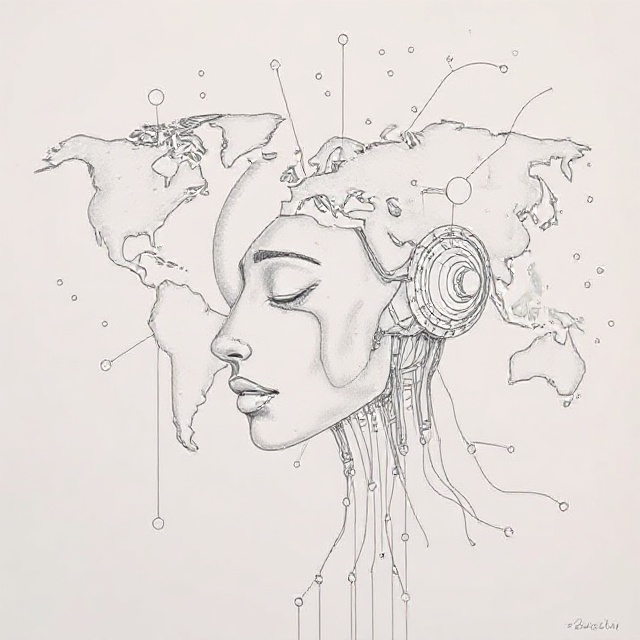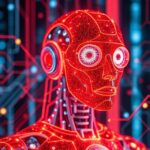Japan, China, and the United States have all made remarkable strides in artificial intelligence (AI) recently, showcasing a flurry of breakthroughs that signal both exciting potential and significant challenges ahead.
**Japan’s Darwin-Gödel Machine: Self-Improving AI through Evolution**
A standout development comes from Japan’s Sakana AI lab, which introduced the Darwin-Gödel Machine (DGM), an AI system that recursively improves its own programming by rewriting its code through a Darwinian evolutionary algorithm[1][2]. This approach merges the theoretical concept of the Gödel machine—originally posited as a self-improving AI that mathematically proves the benefit of its code changes—with practical open-ended evolutionary algorithms that empirically test code modifications.
The process begins with basic coding agents that generate variations through mutations at the source code level. These child agents are evaluated for performance on tasks, and the best performers are archived, forming an evolutionary tree of progressively better versions[2]. Remarkably, in just 80 iterations, the DGM improved software engineering benchmark scores from 20% to 50% and nearly doubled performance on other benchmarks[1][2]. The agents learned sophisticated strategies such as granular file editing and context summarization to overcome system limitations.
This self-improving AI represents a potential paradigm shift: automating the design of AI agents and tools end-to-end could surpass hundreds of millions of dollars worth of hand-designed systems. However, experts like psychologist Jeffrey Miller warn of the dangers of such an evolutionary approach, calling it “insanely recklessly dangerous” due to its uncontrollable nature[1]. Sakana AI is conducting experiments in secure sandbox environments with human oversight and plans to implement robust safety measures before real-world deployment[1].
**China’s Deepseek R1 and Huawei’s Hardware Leap**
China also had a banner period with the release of Deepseek R1, a new version of their AI model that achieves state-of-the-art performance while being five to seven times cheaper than comparable models from the US[1]. Deepseek R1 shows substantial improvements in coding, mathematics, and general logic tasks, rivaling OpenAI’s GPT-3.5 and Google’s Gemini 2.5 Pro on benchmarks[1]. Despite some limitations in complex tasks like generating fully functional game prototypes, Deepseek is considered the best open-weight model and a formidable competitor in AI research[1].
Complementing AI software advances, Huawei unveiled new AI hardware technology that Jensen Huang, CEO of Nvidia, acknowledged as highly competitive with Nvidia’s own offerings[1]. This development accelerates China’s push for technological self-reliance amid geopolitical tensions and US export restrictions, as Chinese companies increasingly adopt Huawei’s AI stack for computing power[1]. The combination of affordable, high-performance AI models and cutting-edge hardware strengthens China’s position as a global AI powerhouse, with the country leading in AI research publications, open-source AI, hardware innovation, and energy production[1].
**US Innovations and Societal Concerns**
Meanwhile, in the US, Google’s VO3 AI model gained viral attention for its unexpected deep understanding of the physical world, including sound and physics, showcasing the growing sophistication of AI models’ world knowledge[1]. Google also launched Flow TV, a platform streaming AI-generated videos 24/7, illustrating creative new applications of AI.
However, the rapid pace of AI advancement has sparked warnings from figures like Dario Amodei of Anthropic, who cautions that many AI companies are not fully transparent about AI’s societal impact[1]. Amodei predicts a potential spike in unemployment to unprecedented levels—up to 20%—within the next five years due to AI automation, a rate double that of the 2008 financial crisis peak[1]. He urges policymakers to prepare urgently, emphasizing the speed and breadth of AI’s disruption to the workforce and economy.
**Broader Context in Japan**
Japan’s government is actively supporting AI and semiconductor development with large public investments, including a JPY10 trillion framework by 2030 aimed at next-generation AI chips and applications across healthcare and transportation[3]. Japan’s AI governance favors less restrictive regulation to foster innovation, allowing sector-specific rules rather than comprehensive cross-sector legislation[3][5].
—
The recent whirlwind of AI advancements illustrates a global technological arms race with profound implications. Japan’s experimental Darwin-Gödel Machine pushes the frontier of autonomous AI self-improvement but raises safety concerns. China’s Deepseek R1 and Huawei’s hardware breakthroughs demonstrate rapid catch-up and innovation, challenging Western dominance. Meanwhile, US AI models continue to astonish with their capabilities, even as experts warn of looming economic and social upheavals from widespread automation. These developments underscore the need for balanced innovation, safety vigilance, and proactive policy to navigate the transformative AI era.


